Challenges and Typical Model Purposes
Public is a wide category that span over public authorities that regulate for instance Telecom Operators, Tax authorities, Social Insurance Agency , Prisons, Municipalities, Nursing Home, Home Care, Police and Fire Forces, Schools and Universities. Hospitals is describe in Healthcare and IT departments is describe in In-House Services.
Many public authorities are funded based on work performed or a fund per user (customer). Therefore it is important to understand what it cost to serve, costs per execution, per client or per patient. It is never about profitability, but about cost to serve, bench-mark and streamline work procedures. There are two sides within public, where for instance Ministry of Health want to have a health care model where the calculate average costs per patient or DRG and fund based on those metrics and want hospitals to report their results so the ministry can bench-mark and set the funds per activity for following year. On the other side are the hospitals, whom want to have a model to be able to report the data but also to manage expenses and improve the performance.
Another example where Cost Transparency Models are used is when Ministry of Justice and the Ministry of Finance demand insight and cost reports from prisons and probation services. Prisons and Probation Services do not normally have the deep financial insight to be able to give a correct and understandable input. With a Cost Transparency Model, data can be turned and rotated and seen by employee types, tasks and services offered, which not only give confidence in the results, it is also opens the possibility to find a common level of details from which to discuss and understand the financial situation. Within Prison and Probation Service, you see a prison taking total expenses and divide by inmates to get the cost per inmate. But it is far from correct as there are big differences in costs for female inmates, high-risk prisoners, isolation and electronic tagging for instance. And what does it costs to offers inmates to work or study. Prisons cannot answer these questions without a Cost Transparency Model and they cannot use the “average” data to base their management decisions on. With a Cost Transparency Model, it is possible to bench-mark prisons down to inmate groups and adopt best practice and from a prison point of with, it will increase the management possibilities and improve the budget phase. Same approach used for any other public area.
Case example
A SWEDISH MUNICIPALITY experienced huge differences is costs per student between some of their 70 compulsory schools. The difference in cost per student between the best vs. the worst performing school was nearly 2600 EUR per year. A school has in average 500 students, which means a potential cost difference of 1.3 M.EUR. The city is a fast growing city, where number of students will grow by nearly 8000 students over the coming 3-4 years, which means potential 16 new schools. It is crucial to understand what drives the costs, why there is so huge differences between costs at schools in the different neighborhoods. Not all schools have full facilities for all subjects, so they rent facilities from each other, for instance for physical education and health, home and consumer studies and crafts. Schools also offer leisure school, which is charged separately.
We made a model where the municipality could analyze each school and match schools and see costs per student, per grade, per subject and the model could be viewed per teacher and class room as well. We added key figures to the output, so the financial data could be seen together with number of students per school, per class, per teacher and how frequent teachers resign, were ill and several other factors the project group found important to complete the financial figures with.
The model was a real eye opener for the municipality and it was a model that is being used not only to improve the economic situation between schools but also when doing plans for new schools, and is therefore an important strategic tool. Managing schools is not just about economy but also about output quality and we used the model to simulate what is could be expected to cost to increase the average grading 1 level. When the model was presented, the director from Health and Social Care found it so interesting and useful that we were asked to build a model for all Nursing homes across the city.

